Sell More Cars and Drive Traffic with Car Dealer SEO

The days of car buyers spending their entire Saturday wandering from one dealership lot to another are fading fast. Today, the car buying journey begins not on the asphalt, but on a screen. A potential customer’s first interaction with your dealership is almost certainly going to be through a Google search on their phone or laptop. They are researching models, comparing prices, reading reviews, and looking for local dealers long before they ever think about scheduling a test drive. In this crowded digital marketplace, where you compete not only with the dealership across town but also with massive national car-selling websites, how do you ensure they find you? The answer isn’t just about having a website; it’s about making that website visible. This is where a powerful, tailored car dealer Search Engine Optimization (SEO) strategy becomes your most valuable asset. SEO is the engine that drives qualified, local buyers directly to your digital showroom. It’s the process of signaling to search engines like Google that your dealership is the most relevant, trustworthy, and authoritative answer for a customer’s search. This comprehensive guide will walk you through the essential pillars of automotive SEO, from foundational keyword strategies and compelling content creation to the critical tactics of local SEO that will put your dealership on the map—literally.
Understanding the Foundation: Why SEO is Non-Negotiable for Car Dealers
In the modern automotive industry, thinking of your website as a simple online brochure is a critical mistake. It is your primary sales tool, your digital storefront, and for many customers, their first impression of your business. The statistics are overwhelming: studies consistently show that over 90% of car buyers conduct online research before making a purchase. They are turning to search engines to ask questions, compare vehicles, and find reputable local businesses. If your dealership isn’t appearing prominently in these search results, you are effectively invisible to the vast majority of your potential market. This is where the distinction between SEO and paid advertising (like Pay-Per-Click or PPC) becomes crucial. While PPC ads can deliver immediate traffic by placing you at the top of the page, they come with a continuous cost and are often viewed with more skepticism by users. SEO, on the other hand, is about earning your position. It’s a long-term investment in building your website’s authority and trust with both search engines and users. A high organic ranking is a powerful endorsement from Google, signaling that your dealership provides valuable information and a positive user experience. The ultimate goal of car dealer SEO isn’t just to attract more website visitors; it’s to attract the *right* visitors—local customers who are actively in the market and ready to take the next step, whether that’s browsing your inventory, applying for financing, or scheduling a test drive.
The Blueprint for Success: Mastering Keyword Research for Your Dealership
Effective SEO begins with understanding the language of your customers. What words and phrases are they typing into Google when they’re looking for a vehicle or a dealership like yours? This is the essence of keyword research. Simply targeting a broad term like “used cars for sale” is not enough; the competition is too fierce, and the intent is too vague. A sophisticated keyword strategy involves targeting a spectrum of search queries that match different stages of the buyer’s journey.
Understanding Different Types of Keywords
To build a comprehensive strategy, you need to target three main categories of keywords:
- Informational Keywords: These are used by people in the early research phase. They aren’t ready to buy yet but are gathering information. Examples include “best midsize SUV for safety,” “Honda Civic vs. Toyota Corolla reliability,” or “what is certified pre-owned?” Creating content around these keywords positions your dealership as a helpful expert.
- Navigational Keywords: These are used by people who already know about you and are trying to find you online. This includes searches for “[Your Dealership Name],” “[Your City] Ford service center,” or “directions to [Your Dealership].” Ranking for these is essential for capturing existing brand interest.
- Transactional Keywords: These are the money-makers. They are used by buyers with high purchase intent who are close to making a decision. These are highly specific and often include a location. Examples include “used Toyota Tundra for sale in Denver,” “new Jeep Wrangler lease deals near me,” or “2022 Ford Explorer XLT Houston TX.”
Leveraging Long-Tail and Geo-Targeted Keywords
Your greatest opportunity lies in long-tail keywords. These are longer, more specific search phrases that, while having lower search volume individually, have a much higher conversion rate. A search for “used cars” is a browse; a search for a “used 2020 Subaru Outback Limited with eyesight in Portland Oregon” is a buyer. Your website’s Vehicle Detail Pages (VDPs) and blog content should be optimized for these highly specific phrases. Crucially, every transactional keyword must be geo-targeted. Car sales are an inherently local business. People are looking for a dealership in their city, county, or neighborhood. Always incorporate your location into your keyword strategy. Use tools like Google Keyword Planner (free), Ahrefs, or SEMrush to uncover these valuable search terms and understand what your customers are really looking for.
Building Your Digital Showroom: A Content Strategy That Converts
Keywords provide the blueprint, but content is the structure you build with it. A robust content strategy is what will attract search engines and engage potential buyers, turning your website into a valuable resource rather than just a vehicle catalog. Great content builds trust, establishes your authority, and guides customers through their purchasing journey. It’s about answering their questions before they even have to ask.
Optimizing Your Core Website Pages
Your primary sales pages need to be rich with unique, valuable content.
- Vehicle Detail Pages (VDPs): Avoid using the generic, manufacturer-supplied descriptions that every other dealer uses. Write unique, compelling descriptions for each vehicle. Highlight key features, the vehicle’s condition, and what makes it a great buy. Incorporate high-quality photos from every angle and, if possible, a short walk-around video. This unique content is a powerful signal to Google and provides immense value to the user.
- Model Landing Pages: Create dedicated pages for each of the core models you sell. A “Ford F-150” page should be a comprehensive hub of information, featuring new and used inventory, links to trim level comparisons, videos, and information about why the F-150 is a great choice for your local market (e.g., “perfect for towing a boat to Lake Travis”).
Expanding Your Reach with a Dealership Blog
A blog is your platform to become a local automotive authority. It allows you to target those informational keywords and capture customers at the very beginning of their search. Consider creating content like:
- Model Comparisons: Write detailed comparisons between the models you sell and their top competitors (e.g., “Honda Accord vs. Toyota Camry: Which Sedan is Right for You?”).
- Trim Level Breakdowns: Help customers navigate complex choices by explaining the differences between trim levels like the LX, EX, and Touring for a specific model.
- Service and Maintenance Guides: Leverage the expertise of your service department. Posts like “5 Signs Your Brakes Need Replacing” or “How Often Should You Rotate Your Tires?” build trust and can drive traffic to your profitable service center.
- Financing Advice: Demystify the financing process with articles on “How to Secure a Car Loan with a Low Credit Score” or “Leasing vs. Buying: Pros and Cons.”
- Local Community Content: Showcase your dealership’s involvement in the community. Write about local events you sponsor or create guides like “The Best Off-Roading Trails Near [Your City],” which naturally appeals to your truck and SUV buyers.
Dominating the Map: A Deep Dive into Local SEO
For a brick-and-mortar business like a car dealership, local SEO isn’t just part of the strategy—it is the strategy. When a potential customer searches “Ford dealer near me,” your goal is to appear in the coveted “map pack” or “local pack” at the top of the search results. This is prime digital real estate, and optimizing for it is non-negotiable.
Your Google Business Profile is Your Local SEO Hub
Your Google Business Profile (GBP) is arguably your most important local SEO asset. It’s the information panel that appears on the right side of the search results and in Google Maps. Optimizing it is free and incredibly powerful.
- Claim and Verify: The first step is to claim and verify your listing to prove you own the business.
- Complete Every Section: Do not leave anything blank. Fill out your business name, address, phone number, website, hours of operation, and service areas. Choose the correct categories (“Car Dealer,” “Used Car Dealer,” etc.) and add specific services you offer (oil changes, brake repair, auto financing).
- Photos and Videos: Upload high-quality photos of your showroom, service bays, inventory, and staff. A steady stream of new photos signals to Google that your profile is active.
- Google Posts: Use this feature to post about new inventory arrivals, special offers, service promotions, or community events. These posts appear directly on your profile and are a great way to engage searchers.
- Reviews are Gold: Actively encourage satisfied customers to leave Google reviews. Positive reviews are a massive ranking factor and a powerful form of social proof. Critically, you must respond to *all* reviews—both positive and negative. A thoughtful response to a negative review can often win over more customers than a dozen positive ones.
Building Local Citations and Ensuring NAP Consistency
A “citation” is any online mention of your dealership’s Name, Address, and Phone number (NAP). Google uses these citations across the web to verify the legitimacy and location of your business. It is absolutely vital that your NAP is 100% consistent everywhere it appears, from your website to directories like Yelp, Yellow Pages, and automotive-specific sites like Cars.com or Edmunds. Inconsistencies can confuse search engines and hurt your local rankings. Use services like BrightLocal or Moz Local to audit your existing citations and build new ones.
The Nuts and Bolts: Technical SEO for a High-Performance Website
All the great content and keyword targeting in the world won’t matter if your website is slow, broken, or difficult for search engines to understand. Technical SEO is the practice of optimizing your website’s infrastructure to ensure it meets the technical requirements of modern search engines.
Mobile-First is the Law of the Land
Google now primarily uses the mobile version of a website for indexing and ranking (a policy called “mobile-first indexing”). This means your website must provide an excellent experience on a smartphone. Text should be easy to read, buttons should be easy to tap, and inventory should be easy to browse on a small screen. If your site is clunky or difficult to use on mobile, your rankings will suffer.
Site Speed and Core Web Vitals
Website loading speed is a confirmed ranking factor. A slow-loading site frustrates users and leads to high bounce rates. Use Google’s PageSpeed Insights tool to analyze your site’s performance and get recommendations for improvement. Common culprits of slow speed include oversized images and inefficient code. Compressing images before uploading them is a simple but highly effective way to improve speed.
Using Structured Data (Schema Markup)
Schema markup is a type of code you add to your website to help search engines better understand your content. It’s like adding translator notes for Google. For a car dealership, this is incredibly powerful. You can use specific schema types like `Vehicle`, `Car`, and `LocalBusiness` to explicitly tell Google the price, make, model, mileage, and VIN of a car in your inventory. This information can then be used to create “rich snippets” in the search results—those eye-catching listings that show a picture of the car, its price, and its rating directly on the Google results page. These listings have a much higher click-through rate than standard blue links.
Measuring What Matters: Tracking Your SEO Success
SEO is a dynamic process, not a one-time task. To know if your efforts are paying off, you must track your performance and use that data to refine your strategy. Setting up the right tracking tools is essential for demonstrating ROI and making informed decisions.
Key Performance Indicators (KPIs) for Car Dealer SEO
Instead of getting lost in a sea of data, focus on the metrics that truly matter for your business goals:
- Organic Traffic: Using a tool like Google Analytics, track the number of visitors arriving at your site from non-paid search results. Is this number trending up over time?
- Keyword Rankings: Monitor your position in Google for your most important transactional and local keywords. Tools like Google Search Console, Ahrefs, or SEMrush are perfect for this. Are you climbing the ranks for “used trucks in [Your City]”?
- Local Pack Visibility: How often does your dealership appear in the Google Map Pack for relevant local searches? This is a key indicator of local SEO health.
- Click-Through Rate (CTR): Google Search Console shows you how many people see your listing in search results (impressions) and how many actually click on it (clicks). A low CTR might indicate that your page titles and meta descriptions need to be more compelling.
- Conversions: This is the ultimate measure of success. A conversion is a desired action taken by a user. For a dealership, this includes online form submissions (credit applications, trade-in valuations, contact forms), phone calls initiated from the website, and clicks on VDPs. You must set up “goal tracking” in Google Analytics to measure these actions and attribute them back to your organic search traffic.
Conclusion: The Road to SEO Dominance is a Marathon, Not a Sprint
Navigating the world of car dealer SEO can seem complex, but its core principles are straightforward: understand your customer, create valuable content that answers their questions, and make it easy for both users and search engines to find and understand that content. We’ve journeyed through the essential components of a winning strategy, starting with the foundational importance of SEO in today’s digital-first market. We mapped out a blueprint for success through meticulous keyword research, distinguishing between informational, navigational, and high-intent transactional queries. We then explored how to build out your digital showroom with a content strategy that not only features your inventory but also establishes your dealership as a trusted local authority. We dove deep into the critical, non-negotiable tactics of local SEO, emphasizing the power of a fully optimized Google Business Profile and consistent local citations. Finally, we covered the technical underpinnings that ensure your site is fast, mobile-friendly, and understood by search engines, as well as the crucial metrics needed to track your success. SEO is not a “set it and forget it” activity; it is an ongoing investment in your dealership’s long-term health and visibility. The digital landscape is always evolving, and your strategy must adapt with it. By consistently applying these principles, you are not just chasing rankings; you are building a sustainable pipeline of qualified, local customers who will drive onto your lot ready to buy. Start today, and turn your website into your most powerful sales tool.


 Search ads
Search ads Mobile ads
Mobile ads